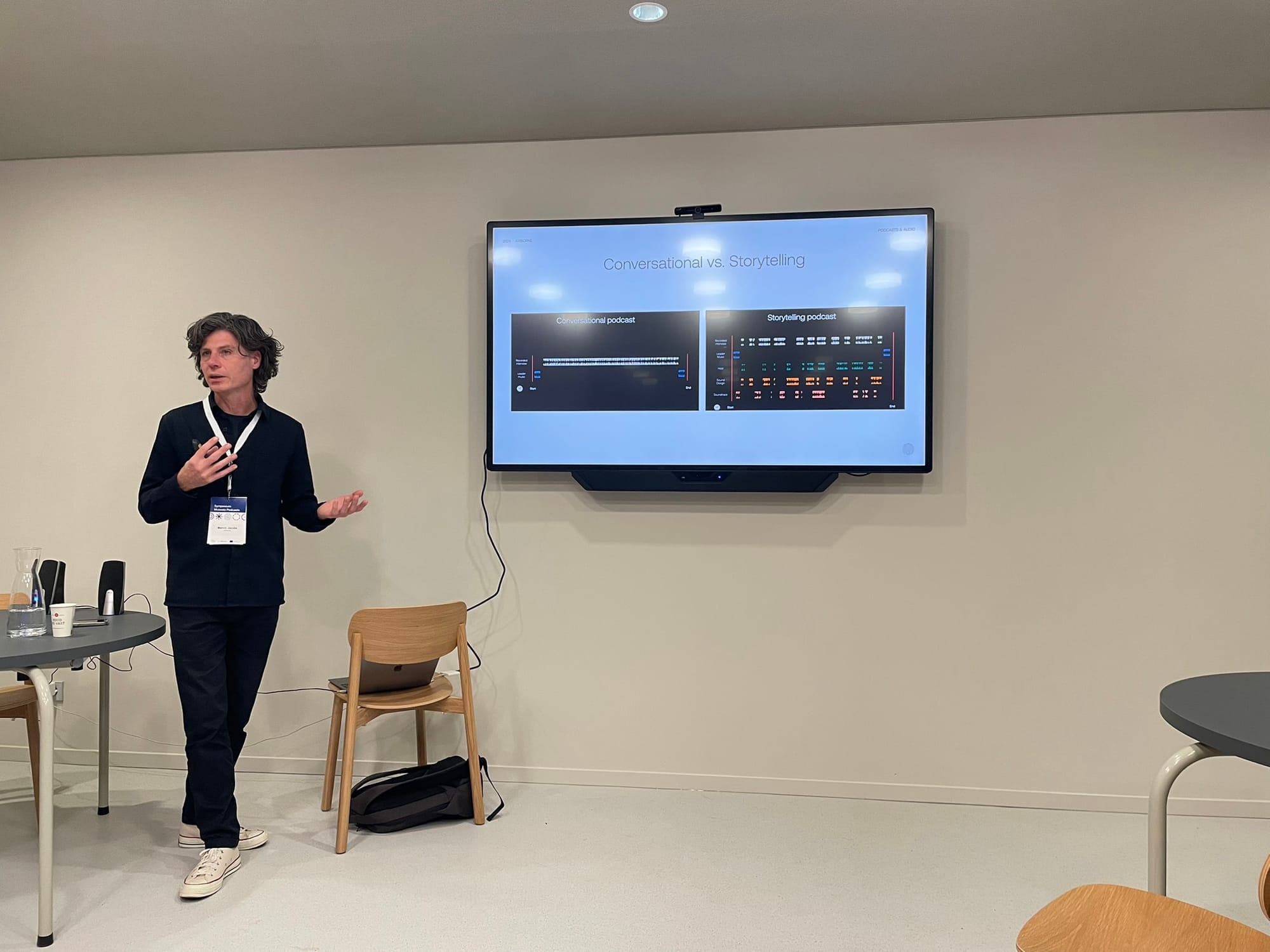The Power and Popularity of Podcasting
Discover the power of podcasting: From storytelling layers to blurring lines with video, learn why podcasts are more intimate and engaging than ever.

Podcasting has grown from a niche format to one of the most influential mediums of storytelling and communication. Last week, I had the opportunity to explore this at a podcasting conference held at the National Holocaust Museum in Amsterdam.
The event, aimed at professionals in musea, was impeccably organised, and the venue—a beautiful museum with an excellent auditorium—provided a meaningful backdrop for the day. I discovered the conference through Marvin Jacobs, whom I met personally, and his newsletter sparked my curiosity. Attending with two friends, I stepped into a medium I don’t naturally gravitate toward, and it turned out to be a truly insightful experience.
While I’m more comfortable with written formats, the day gave me a new perspective on why podcasts resonate so deeply. From the intimate connection fostered by earbuds to the serial nature of episodic storytelling, podcasting revealed itself as an exciting and multifaceted medium.

Inside the Layers of Storytelling Podcasts
One of the highlights of the day was Marvin Jacobs’ deep dive into how his firm, Audio Agency Airborne, creates storytelling podcasts. He walked us through every step of the process, from concept to production, and revealed the intricate layers that bring these podcasts to life:
- Recorded Interviews: Authentic voices and stories form the foundation of a compelling narrative.
- Leader Music: A recognisable intro sets the tone and brand of the podcast.
- The Host: The anchor who guides the listener through the story.
- Sound Design and Soundtrack: Carefully crafted to create atmosphere, evoke emotion, and add depth to the narrative.
These elements make storytelling podcasts distinct from other styles. For example, “chat casts” (two personalities talking conversationally), interview-style podcasts (think Joe Rogan), single-person explorations (audio essays), or dramatic documentaries all have unique formats and approaches. Marvin’s insights highlighted how storytelling podcasts stand out by weaving multiple layers into a cohesive and immersive experience.

Podcasting’s Future: Blurring the Line with Video
As podcasting continues to evolve, the line between audio and video is becoming increasingly blurred. Short video snippets from podcasts, often accompanied by captions and quotes, are transforming how podcast content spreads on social media. These visual elements extend the reach of podcasts, making them more shareable and engaging for wider audiences.
This development raises intriguing questions about the future of podcasting. Will audio-first remain the norm, or will video elements become a standard part of the format? These are topics I hope to explore further, potentially through a conversation with Professor Martin Spinelli, whose insights and workshop at the conference were particularly inspiring.

A Reflection on Podcasting’s Role in Communication
For me, attending this event was a chance to step out of my comfort zone and engage with a medium I’ve often overlooked. Podcasts offer a unique blend of intimacy, creativity, and narrative depth that can teach us valuable lessons about connection and engagement. Listening is often an intimate experience, and the podcasts—crafted in a sober, direct, and yet lively way—become emotional experiences rather than intellectual ones.
While I plan to dive deeper into the topics of video integration (vodcasts) and shareable quotes, this day was a reminder that even as formats evolve, the power of storytelling remains constant. Whether it’s through words, sounds, or visuals, the goal is always the same: to connect with people in meaningful ways.
If you liked this article, make sure to subscribe for updates.




